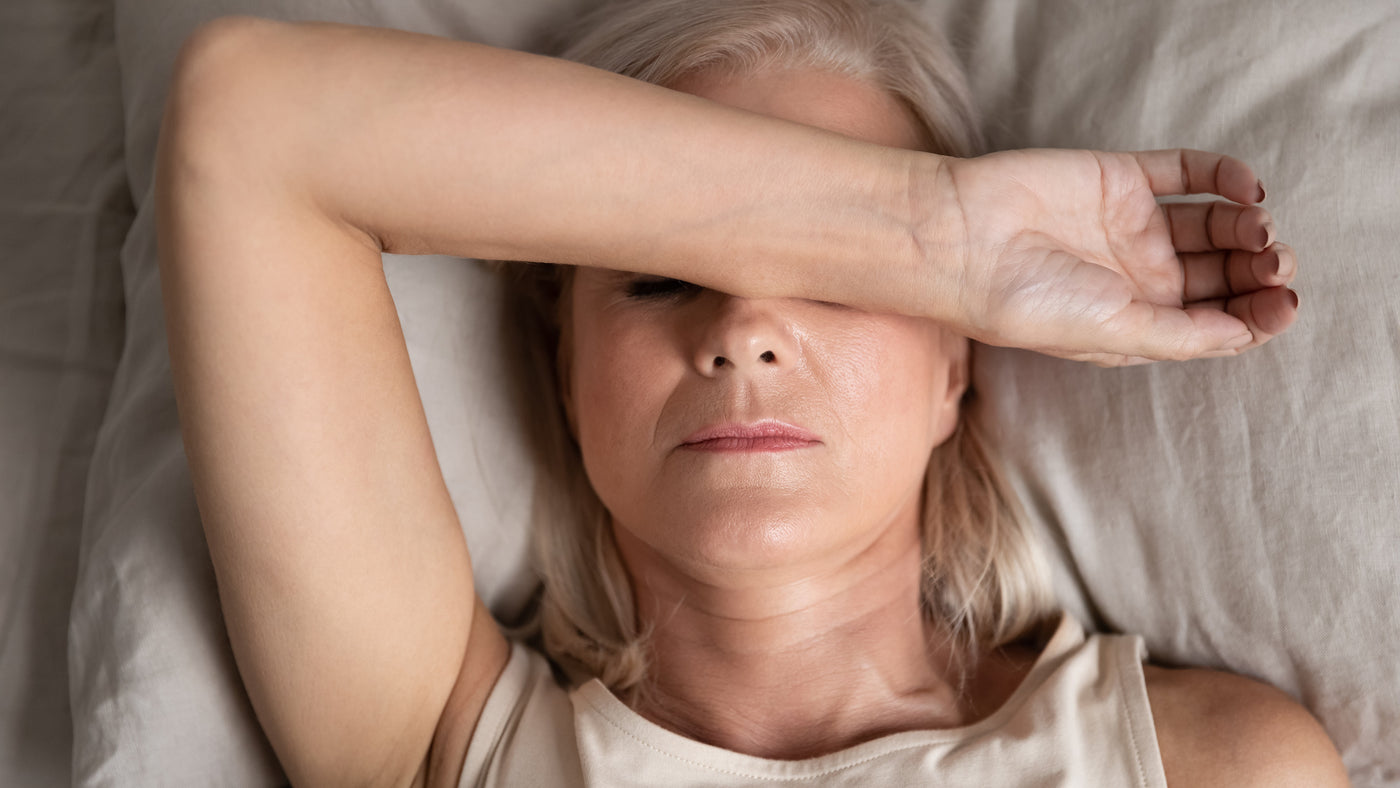
Hot Flashes at Night: Why Are Hot Flashes Worse at Night?
During perimenopause and menopause, roughly 75% of women will experience hot flashes of varying intensity.
Some women experience flushing and head rushes but no sweating, while other women experience severe perspiration that necessitates changing clothes. "Night sweats" are the term for hot flashes that occur in women at night. But why are night sweats a thing in the first place, and what can be done to offset them?
What Causes Hot Flashes?
The most common cause of hot flashes is the change in hormone levels that occurs before, during, and after menopause.
Hot flashes are so commonplace, in fact, that they are characterized as one of the most prevalent symptoms of perimenopause and menopause. Sudden, unanticipated spikes in body temperature, which can occur during the day or at night, are the catalyst for a hot flash. These fluctuations are thought to be strongly correlated with hormonal imbalances like those caused by menopause. Hormones don’t just affect reproductive health, but also the way our brains and bodies maintain homeostasis.
A major shift in hormones can lead the body's thermostat – the hypothalamus, which regulates body temperature – to become more sensitive to minute changes in temperature.1 Most of the time, menopause is the primary factor causing hot flashes and night sweats. Other potential causes include adverse drug reactions, thyroid issues, some cancers, and cancer treatment side effects.2 Though hot flashes are incredibly common, it’s unclear exactly why such a shift in the body’s ability to process temperature comes about a result of menopausal hormone changes.
But researchers do know that some factors may increase your risk of getting them, such as:3
- Obesity
- Smoking
- Race: Black women are more likely than women of other races to report experiencing hot flashes during menopause. Asian women report hot flashes the least frequently overall.
Hormonal Changes During the Day vs. Night
Female reproductive hormone fluctuations aren’t anything abnormal; they are a necessary part of maintaining good reproductive health as a woman progresses through her menstrual cycle each month.4
But, it’s also important to note that these hormones follow the body’s circadian rhythm, or “internal clock,” which means that they can be released in higher volumes depending on the time of day. How the body releases hormones can also vary based on where a woman is in her cycle.
Even women entering or actively in menopause can experience these changes, and perhaps even more aggressively as cycles begin to become irregular and stop entirely. Researchers have observed prominent 24-hour rhythms for many hormones, but others, like progesterone or estradiol, tend to peak during certain times of day or night. That means that the hormonal changes (too little or too much of a particular hormone) that tend to trigger or exacerbate hot flashes can be more likely to occur during the night.
Helpful Habits that Minimize Night Sweats
While there are medical treatments that can help with hot flashes, making minor adjustments to your daily routine can occasionally help you reduce the frequency and intensity of your hot flashes.
If you experience hot flashes, consider changes such as:
- Keeping cool during the day and while sleeping by donning airy, light clothing.
- Working out during the day to reduce stress and promote sound sleep at night.
- Dressing in layers so you can take some off and add others as your body temperature changes.
- Creating a relaxing routine before bed to lower stress.
- Using a nightstand fan to help your body cool down without triggering a hot flash.
- Stop or reduce caffeine and alcohol consumption, which can elevate your pulse and body temperature.
- Consume cold liquids to avoid overstimulating your internal thermometer.
Resources:
1 Deecher, D., & Dorrkies, K. (2007). Understanding the pathophysiology of vasomotor symptoms (hot flushes and night sweats) that occur in perimenopause, menopause, and post menopause life stages. Archive of Women’s Mental Health, 10, 247-257. https://doi.org/10.1007/s00737-007-0209-5
2 Freedman, Robert R. (2001). Physiology of hot flashes. American Journal of Human Biology, 13(4), 453-464. https://doi.org/10.1002/ajhb.1077
3 Mayo Clinic. (n.d.) Hot flashes. Retrieved October 28, 2022 from https://www.mayoclinic.org/diseases-conditions/hot-flashes/symptoms-causes/syc-20352790
4 Reed, Beverly G., & Carr, Bruce R. (2018, August 5). The Normal Menstrual Cycle and the Control of Ovulation. National Library of Medicine. Retrieved October 28, 2022 from https://www.ncbi.nlm.nih.gov/books/NBK279054/
5 Archer, D.F. et. al. (2011). Menopausal hot flushes and night seats: where are we now? Climacteric, 14(5), 515-528. https://doi.org/10.3109/13697137.2011.608596
6 Utian, Wulf H., Jones, Michelle, & Setchell, Kenneth D. R. (2015). S-equol: A Potential Nonhormonal Agent for Menopause-Related Symptom Relief. Journal of Women’s Health, 24(3), 200-208. https://doi.org/10.1089/jwh.2014.5006


